Weekend writing on historic preservation (with photos)
Someone wrote an email to the HistoricWashington list, in part asking-wondering why the DC historic preservation laws don't allow individual property owners to opt out of inclusion in historic districts.
My response--
Re: does the notice of including a property on the DC Inventory provide an opt-out for property owners?
No. And that's a good thing. The point about inclusion on the DC Inventory is to provide protections of properties with historic merit either at the level of an individual landmark or as a contributing structure to a historic district, as well as to give citizens a process and opportunity for weighing in on changes in their neighborhood that could have potentially adverse affects, and providing for a process that works (but doesn't always obtain) more optimal results.
Providing individual property owners with the ability to opt allow eviscerates protections for others (no demolition protection, no protection for architecturally unsympathetic changes). So what's the point then of having a historic district, or trying to preserve architecture and history, which in my opinion are the defining elements of living in (and the competitive advantage for marketing purposes) the City of Washington, if you give people the option of not participating?
This is about contribution to the greater public good, as confirmed by the Supreme Court in the holding of the case Penn Central Transportation v. the City of New York.
National Register of Historic Places protections have to do with protection from federal undertakings, which can be an issue in DC, as well as with eligibility for federal tax credit programs (which tend to be available only for commercial properties, at the present).
Generally, DC forwards to the NRHP for inclusion, properties and districts entered on the DC Inventory. However, federal law provides individual property owners the right to opt out of listing in the National Register of Historic Places.
As I was "arguing" a couple different times tonight, I find it extremely ironic that today, DC neighborhoods are in high demand, "everyone" wants to live in them, but many of these same people clamoring to live in DC are "against" or don't understand historic preservation. Most of the DC neighborhoods that are desirable today would not be worth living in today, had it not been the efforts of the "urban pioneers" of the 1960s and 1970s who preserved houses, and worked with others to stabilize and improve their neighborhoods, in a time when people and academia thought that center cities had little if any future at all. (Note that it is these crotchety "old" "hysteric preservationists" of today that were the young, hip urban pioneers of 30-40+ years ago.)
See the demolition underway currently on the 1000 block of 3rd Street NE, compare this to the buildings that are coming down, and then tell me that the provisions in the DC Inventory are a bad thing.
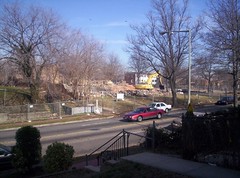
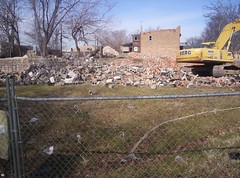 Demolition on Square 749.
Demolition on Square 749.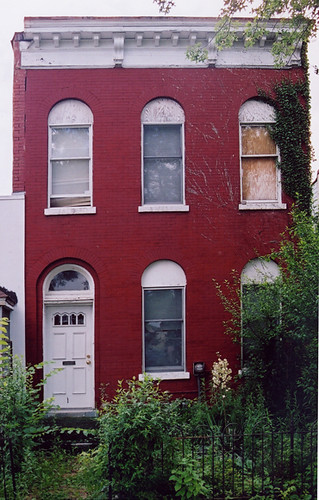 1002 3rd Street NE. Now gone. Photo by Peter Sefton.
1002 3rd Street NE. Now gone. Photo by Peter Sefton. 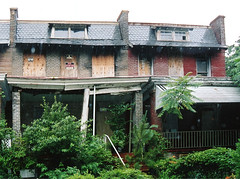 1022-1024 3rd Street NE. Demolished. A textbook lesson in "demolition-by-neglect." Photo by Peter Sefton.
1022-1024 3rd Street NE. Demolished. A textbook lesson in "demolition-by-neglect." Photo by Peter Sefton.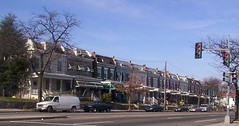 Maintained porch front houses in DC. Photo from Beyond DC.
Maintained porch front houses in DC. Photo from Beyond DC.Or deal with an email (sent after the fact) from a family that lived for decades in an 1870s frame house that was demolished--despite your best efforts-- by a church for a parking lot and try to convince me that a gravel topped mid-block (illegal but not enforced against) parking lot is a better contribution to a neighborhood, and then tell me that the provisions in the DC Inventory aren't sound public policy, that not providing protections for preserving and enhancing quality of life for the residents of the District of Columbia is actually better.
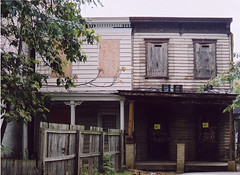 These frame buildings at 819-821 7th Street NE were built around 1876 and were demolished after more than one decade of neglect (and a period of equal duration of a lack of maintenance enforcement by DCRA). Currently the site is being illegally used as a parking lot by Pilgrim Baptist Church. Photo by Peter Sefton.
These frame buildings at 819-821 7th Street NE were built around 1876 and were demolished after more than one decade of neglect (and a period of equal duration of a lack of maintenance enforcement by DCRA). Currently the site is being illegally used as a parking lot by Pilgrim Baptist Church. Photo by Peter Sefton.(As they say in the Carrier or Crane air conditioning commercial..."we have to get it right. People live in these houses." Or as Neil Young sang in "Rust Never Sleeps"--"Once you're gone, you ain't never coming back.")
But then, I am originally from Detroit, so perhaps I have a different level of appreciation for the stabilization, preservation, and improvement of center cities. Note that DC, NYC, Boston, SF, Seattle, Portland, and Chicago are doing pretty well, and many (but not all) parts of Philadelphia are too, and that most other traditional center cities continue to die. A goodly reason for the success of these cities is historic preservation oriented public policies (although each of these cities have varying additional reasons for success).
(Interesting discussions about these issues, how people's decisions on their own houses impact their neighbors, + or -, are in various homeowner resource pages on the Community Design Center of Pittsburgh website.)
I know not one whit about the issues involved in the Italian Chancery building on 16th Street NW. (See this mention from the Washington Post.)
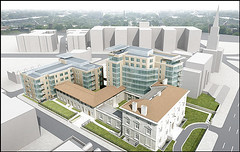 Developers plan to convert the old Italian embassy into luxury condos. (Shalom Barnes Associates)
Developers plan to convert the old Italian embassy into luxury condos. (Shalom Barnes Associates)While it's nice to see the DC Historic Preservation Office and the Historic Preservation Review Board take a more proactive role in a designation issue, it does bother me that they are doing so there, in a neighborhood with a fair amount of social and organizational capacity already in place and engaged, but they aren't stepping up adequately (in my humble, advocacy-oriented opinion) over similar situations that are arising in the northeast quadrant, and other neighborhoods "in play" around the city.
In northeast, "newly" chic neighborhoods, especially those with red line subway access, are experiencing greater levels of demand. Residential building stock, used as residences but zoned commercially, is at particular risk, as are properties with adjoining vacant lots. Not to mention that infill housing projects have no design review requirements and too many of the new projects are modular housing with facades and setbacks out-of-kilter with historic building stock.
In my neighborhood, one particular square comes to mind, all zoned commercial, but about 85% 1890s brick rowhouses, is at particular risk, sitting as it is between one 500 unit condo project immediately on the south, and a 770 unit condo project immediately north (as well as another project on the next square south AND the next square north). [Square 751, bounded by I, K, 2nd, and 3rd Streets NE.]
And we have lost plenty of other properties already, and face other losses (see previous paragraph and think about what happened or will happen on the squares that are being converted to condos--one loss on another square not mentioned above was a peaked roof frame [row]house that probably once had been free standing, possibly dating from the 1860s, likely the oldest building north of the Capitol Hill Historic District and south of Florida Avenue), not to mention the frame buildings with the facades torn off and replaced with brick, the cinder block additions, etc.
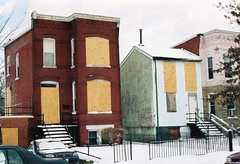 302-304 K Street NE. Demolished by Greenebaum & Rose. These buildings could have been moved, but such is not required or encouraged in the DC development regulations. Photo by Peter Sefton.
302-304 K Street NE. Demolished by Greenebaum & Rose. These buildings could have been moved, but such is not required or encouraged in the DC development regulations. Photo by Peter Sefton.Plus, as I wrote in this blog entry in November "Who can you turn to when the most active, aggressive destroyers of the city's livable places are DC Government agencies?," it's not like we can rely on District Government agencies to do the right thing, or to construct (or to fund the construction of) quality designed buildings when it comes to new projects in our neighborhoods (comprised of historically eligible building stock dating from the 1870s to the 1930s) either.
Just like the National Historic Preservation Act only addresses federal undertakings, the local historic preservation law only pertains to designated properties and historic districts.
Meanwhile, the city possesses a far greater number of properties eligible for historic designation (compared to the number currently designated) that "enjoy" no protections whatsoever under current law.
Index Keywords: historic-preservation



0 Comments:
Post a Comment
<< Home